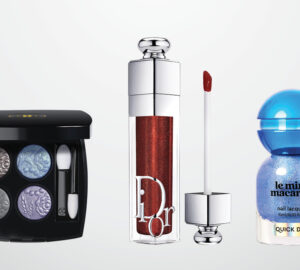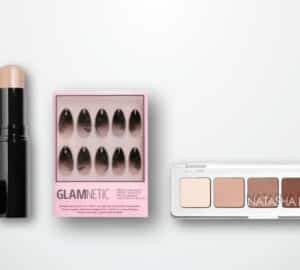Your face is the first thing others notice about you, so it’s important that it makes the right impression. But sometimes, all it takes is a slight imperfection to zap our confidence and make it difficult to put our best face forward. Whether it’s something that has always bothered you or a new issue that has arisen with age, there are steps you can take to address any problem. We talked with local experts about two common cosmetic treatments for the face.
rhinoplasty
According to the American Society of Plastic Surgeons, rhinoplasty is the most common surgical cosmetic procedure in America with more than 350,000 performed in 2020. Dr. Mike Nayak of Nayak Plastic Surgeon says that the procedure is performed for two reasons: function and aesthetics. “A functional rhinoplasty improves the airway to correct nasal obstruction,” he explains. “When it comes to aesthetics, the procedure can be done to alter the appearance of the nose in a variety of ways, such as lifting a drooping tip or straightening the bridge.” He adds rhinoplasty cannot correct sinusitis or other sinus issues, although they can be treated with a different surgery.
Most people have incorrect assumptions about the structure of the nose as it relates to rhinoplasty, according to Nayak. “It is not a solid structure that you can just whittle away imperfections from,” he says. “It’s more of a tent-like structure, so the approach is rebuilding and repositioning the framework.” For cosmetic rhinoplasty there are two main approaches: structural and preservation. The former focuses on rebuilding the structure of the nose, while the latter works to preserve it. Nayak notes that while he prefers a preservation approach, there are times when structural will better meet a patient’s needs.
Nayak suggests considering architecture to understand the difference between the two. “Imagine the Chrysler Building in New York City—in a structural approach, if you wanted to shorten it, you would remove the excess height from the top,” he explains. “The problem is that the building no longer looks like the Chrysler Building because you’ve removed some iconic features. You have to use other materials to rebuild as best you can, but you’re never going to get it exactly the same. However, if the structure is damaged or you don’t want to preserve it, rebuilding may be the best course of action. The preservation approach is different. Imagine instead that you cut a chunk out of the lower portion of the building. It leaves the iconic top intact and preserves the original structure while shortening the building.”
lip injections
When it comes to concerns about lips, most people are looking for more volume, according to Jackie Carr, R.N., ANP-BC, LE, owner of Pur-One Medispa in Des Peres. Results are usually achieved using dermal fillers, but she stresses the importance of understanding your own facial structure before receiving treatment. “Thin lips do not always want to hold onto dermal filler or may require multiple injections to achieve a fuller appearance,” she notes. “Furthermore, the frame of your face is important to assess. Large lips may appear out of place on a smaller face. Sometimes, a patient gets the lips augmented and has a difficult time gauging if there is still filler present. It becomes their new norm, and they want to continuously place more product.”
Along with adding volume, dermal fillers can be used to treat fine lines that form around the lips. “Lip wrinkles are a common complaint from women, and it tends to ramp up once menopause occurs,” Carr explains. “Fat pads and the bone structure that provides support to the lips start to atrophy with age. That lack of support results in line formation.” Until recently, there were limited options to treat these winkles. “Placing filler in this area could create an unnatural ‘mound’ effect,” she says. “Two newer types of injectable filler, Volbella and Redensity, have been made to address lip lines while maintaining a natural appearance without any unwanted heaviness.”
As with any injection, it’s important to consult with your provider before receiving dermal filler in the lips. Carr notes that swelling and bruising are always potential side effects, and other factors can affect recovery. Taking anti-inflammatory supplements can result in increased bleeding and bruising after the procedure, and patients with a history of cold sores may experience skin irritation that triggers an outbreak. Both negative outcomes can be avoided by taking the proper steps, according to Carr. She also recommends that people be prepared for multiple small injections. “Treating the lips slowly over time can create a more natural appearance without overfilling,” she says. “Less is more! A natural and slightly enhanced lip is becoming more desirable in the world of aesthetics.”








